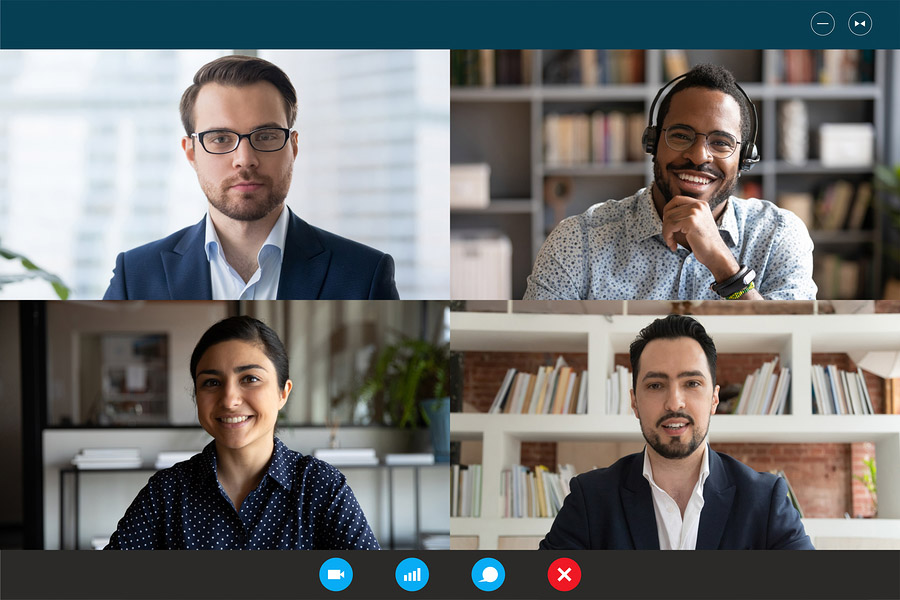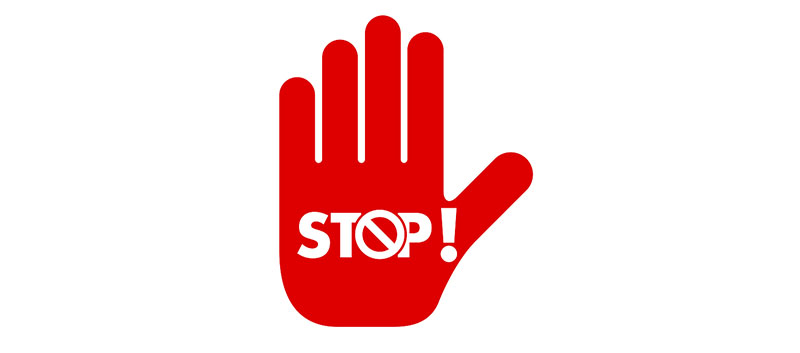Written by Sean McPheat | 

In its third edition of ‘the State of Sales’ report in 2020, SalesForce reported that “Sales reps have increased their time connecting virtually with customers at a rate 3x greater than connecting in person.”
In addition, it states that “Sales reps can reach more customers with virtual selling or even reach customers in various geographical locations.”
That, of course, was written before the COVID pandemic, but it shows that virtual meetings with clients and prospects were exponentially on the increase before it became the only methodology that we could use to reach prospects.
When the lockdowns are over, we may find that the virtual world has uncovered a whole new way of researching our customer base and allowed us to seek out information and facts that we hadn’t tried before.
Although the current situations may negate us selling very much to our current and future customers, we can still use this time to carry out research and find out facts before having virtual meetings with prospects. The world has slowed down considerably, but not stopped yet!
So, what would be the best practices to adhere to when meeting up with a client virtually? Are there major differences between doing this face to face and on-line?
Here are some ideas that will help when you are holding a virtual meeting with a prospect online.

• Don’t assume that this will be easier or harder than meeting in person.
Your mindset will play a vital role in how these meetings proceed, so be aware of how you are preparing your mindset and your attitude before you touch base
• Don’t neglect the preparation
You wouldn’t go into a face-to-face meeting without planning, so don’t use this medium as an excuse to by-pass the professionalism you need to display, even in these times of crises.
• Don’t treat this as a simple call to ‘touch-base’
Remember that your prospects will be as anxious and worried as you are about the situation, so don’t use the chance to meet up virtually as just that…a meet-up. Even though it’s not business as usual, you can still be professional and add some sort of value to the prospect, even if it won’t be seen until we enter the ‘new normal’
• Don’t try to ‘sell’
This is true when you’re face-to-face and even more so when you are in the virtual world. See this call for what it really is…a fact-finding and initial meeting online.

• Do think about what is on the prospect’s mind
This is not the time to sell your products. Do check in with the prospect to see how they are doing with the current situation. Treat it as a business call, with greater empathy than ever before
Their mindset will be on how their business will get through this. People will not be making big decisions that will affect their current cashflow or investment.
See this an opportunity to build relationships and prove your human touch, rather than being seen as a transactional interruption.
• Do be future-focused
Ron Temple, head of U.S. equity at Lazard Asset Management, says that
“While the economic slowdown has been sharp and sudden, I think the recovery is likely to disappoint people expecting a quick return to normal. Monetary and fiscal stimulus will help cushion the economic blow, but consumers and small businesses are going to need more help to endure this crisis.”
He may have been referring to the US market but, globally, we will see a slower return to our usual sales patterns. Most economists are referring to the time after the virus as the ‘new normal’.
If you think that you’ll be able to get things back on track with your clients and prospects quickly after the lockdown, we may have to think differently. Although there will no doubt be pent-up demand, the amount of freedom customers will have to invest will be highly limited.
Just like it took many months (and in some cases, years) for businesses to recover after the last recession, this one, albeit for different reasons, will take time to adjust to what will be a new world order of things.
• Do be vigilant in your fact-finding
See this as an opportunity to research how things will be after we have re-invented our businesses. Clients and prospects will still want to be offered good value, but there will be a bigger need for advice, recommendations and assistance as things pick up again.
This means we need to build our knowledge on how our clients’ and prospects’ businesses will need to be structured.
More so than ever before, clients will need you to be consultative in your approach. No-one knows exactly how things will pan out when the virus has finally departed, but one thing we do know: businesses will need a great deal of advice and help when they start up again.
You need to put yourself in the position of being an influencer and showing your ‘big-picture value’ to all who will need you.
• Do prepare effectively
Making a virtual call to a prospect means you need to have all your ducks in arrow, more so than when you’re face to face.
Ensure the prospect is aware of what will be discussed in the call
Ensure you know what the result of the call is destined to be
Diligently carry out your research about the company, finding out what their values are, their vision and mission and how you can link up with that after the trading restrictions have been lifted
This preparation will allow you to have a cohesive and professional conversation with the prospect, so they see it as a valuable use of their time
• Do plan for others to be available online
The current situation may mean greater availability of people in your company and the prospects, so check if others would benefit from being part of the call. If so, use meeting software that allows for more people to be online.
Although face-to-face offers opportunities that no other meeting facility does, by using webcams you get as close as possible to being in the same room.
When you have others in the meeting, more decisions can be made, and greater use of others’ ideas and contributions can drive things forward.
• Do identify other uses of the meeting software
Don’t just constrain yourself to thinking you have to talk about your services. You could help clients who currently use your products. Could you run a virtual sales presentation, a webinar, Zoom or Skype meetings to discuss current use of your products? Are there training or coaching programmes you could run to assist clients who may be using your products at home?
Think of opportunities to assist clients in different ways and use the technology in more creative ways.
• Do ensure people on the call are aware of the meeting software’s capabilities
Most people will be coherent with how the software works, but ensure you know how it works yourself. Do some test runs. Record a prepared meeting and play it back so you know how it sounds.
Make sure you can help if things go wrong. What if your microphone doesn’t work? What if their sound or camera doesn’t work? Are you aware of what to do to assist in those situations?
What if they can’t share your screen? Could you connect via email while talking to you remotely?
• Do run the online sales meeting as if you are there with them
You may be able to see them on webcam and observe their body-language, but what if that’s not possible? You may need to slow down and run this meeting in a way that still comes across as professional but with more clarity and continuity.
You’ll need to offer more confirmation that things are in order. Saying things like ‘Are we still on the same page?’ and ’Do you have any questions?’ are vital when not in the same room.
• Do ensure you have a personal connection with the prospect throughout the meeting
You can still concentrate on what the prospect is requiring from you, but it’s important for you focus on understanding why those needs are so vital for them. Remember that they will be looking for advice and recommendations, but only when a high amount of trust has been built up. You need to see this virtual meeting as a chance to build up confidence in the prospect in dealing with you, so when the time comes, a face-to-face meeting would be the next logical step.
• Do be aware of what questions they will still be asking
Remember that no matter the situation businesses are in and what market or industry they trade in, there are still fundamental questions that they want answering, like “What problem does your product solve?” “How does that compare to your competitors?” or “How much does all that cost?”
These questions will still be on the mind of customers for when we emerge from this lockdown, so be aware of how you would answer them and keep them informed of how you can help them when they need your services.
• Do show understanding for your prospect’s position
Their business may be worse off than yours presently, so it makes sense to show an empathetic tone in your approach. Make sure your website reflects the current situation, so people can see you care and want to help in any way you can.
If customers owe you money, now is not the time to go chasing them down. It could major problems for you when we get through this. Instead, that empathetic mindset will be appreciated by all people you deal with, now and in the future.
• Do concentrate on what you CAN do, rather than what you CAN’T
There is a myriad of things that can’t be done now. Instead, focus on what you CAN do. Could you change your focus to how you could re-invent yourself in the future? Could you analyse what people will be requiring now and see if that’s an area you could focus on? Is there a way you could show your value to the market in different ways to what you did before?
Those questions will help you become more adaptable and agile to the marketplace, as things are on-hold at present.
It may be that the whole world of selling is moving towards this digital, video-first format, so it will pay you to enhance your selling skills in this virtual way. By following some or all the above guidelines, it will give you the confidence and ability to build trust with prospects who are wanting to enhance their businesses when they get the chance to do so. With your help, they will probably fare better than many.
Please check out our Online Sales Training or please contact us to discuss your Sales Training requirements. Our L&D team can help you to work out which course will be best for you or your team.
As a Sales Training Provider, we can help you with our wide range of Sales Courses that can help you.
Popular sales courses include:
Telesales Training
Account Management Training
Sales Management Training
Sean

Sean McPheat
Managing Director
MTD Sales Training
Updated on: 24 November, 2021
Related Articles

Search For More
